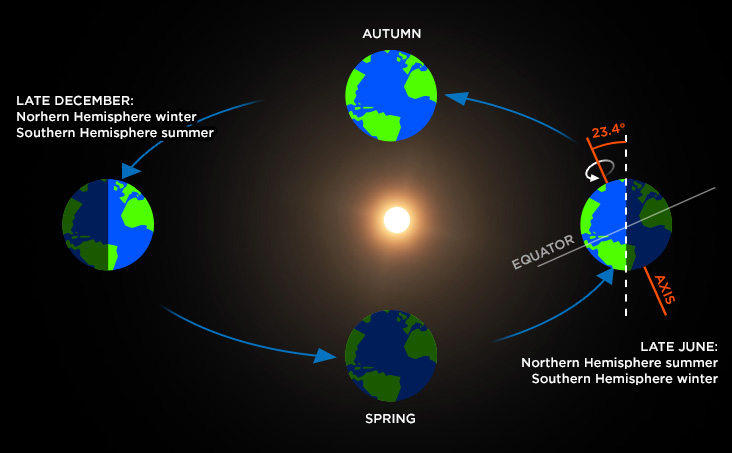Earths rotation is a fundamental characteristic of our planet, influencing everything from day and night cycles to weather patterns. However, this rotation is not constant; it experiences variations over time due to a variety of natural and human-induced factors. In this blog, we will delve into the scientific explanations behind these changes, their implications, and why they matter.
The Basics of Earth’s Rotation
Earth rotates on its axis approximately every 24 hours, a motion that defines our concept of a day. This rotation is primarily influenced by the planet’s initial formation and the conservation of angular momentum. However, numerous factors contribute to changes in the speed and stability of this rotation.
Factors Influencing Changes in Earth’s Rotation
1. Gravitational Forces
One of the most significant influences on Earths rotation comes from gravitational interactions, particularly with the Moon and the Sun. The gravitational pull from these celestial bodies creates tidal forces that cause the oceans to bulge, resulting in tidal movements. As these water masses shift, they redistribute the Earth’s mass, leading to slight variations in rotation speed.
The Moon’s gravitational pull, for example, not only affects ocean tides but also has a long-term effect on the rotation of the Earth. Over millennia, this interaction has caused a gradual slowing of Earth’s rotation, lengthening the day by about 1.7 milliseconds per century.
2. Glacial Rebound and Climate Change
As climate change leads to the melting of glaciers, the redistribution of water affects Earth’s mass distribution. This phenomenon, known as glacial isostatic adjustment, results in what is termed “glacial rebound.” Regions that were once burdened by massive ice sheets become less massive and experience slight increases in rotation speed as they rise and reestablish equilibrium.
Conversely, the melting glaciers contribute to rising sea levels, which further alters the distribution of mass around the planet, potentially affecting rotation dynamics in different regions.
3. Seismic Activity
Large earthquakes can also have a profound impact on Earths rotation. When an earthquake occurs, it can shift substantial amounts of mass within the Earth, resulting in tiny changes in the rotation rate. For instance, the 2004 Sumatra earthquake, one of the largest ever recorded, caused Earth’s rotation to speed up by about 6.8 microseconds. This change, while minute, illustrates how seismic events can have immediate effects on the dynamics of our planet.
4. Atmospheric Dynamics
Earth’s atmosphere is a dynamic system influenced by weather patterns, pressure systems, and wind currents. Changes in atmospheric pressure can redistribute air mass and affect Earth’s rotation. For example, significant weather events, such as hurricanes or changes in wind patterns due to El Niño, can lead to slight shifts in rotational speed.
This redistribution of mass in the atmosphere alters the moment of inertia of the Earth, leading to minor changes in the length of a day.
5. Human Activities
Interestingly, human activities have begun to play a role in changing Earth’s rotation. The construction of large reservoirs, extraction of groundwater, and other large-scale water management practices can redistribute water and affect Earth’s mass distribution. For instance, studies have shown that the filling of the Three Gorges Dam in China altered the rotation of the Earth by a small, but measurable, amount.
Long-Term Changes and Implications
While the changes in Earth’s rotation can be minute on a daily basis, they accumulate over longer periods and can have significant implications. For instance, the gradual slowing of Earth’s rotation due to tidal friction influences everything from timekeeping to navigation systems. The precise measurement of time is crucial for modern technology, including GPS systems, which rely on accurate calculations of Earths rotation.
Moreover, changes in rotation can impact climate systems. Variations in ocean currents caused by shifts in rotational speed can influence weather patterns, potentially leading to extreme weather events or changes in climate stability. Understanding these dynamics is crucial as we navigate the impacts of climate change.
The Role of Ongoing Research
Research into Earths rotation is vital, especially in the context of climate change and its broader environmental impacts. Advances in satellite technology and precision measurement techniques allow scientists to monitor these changes more accurately than ever before. Ongoing studies aim to provide better predictions of how Earth’s rotation may continue to change and how these changes will impact our planet.
Conclusion
Earth’s rotation is a complex and dynamic phenomenon influenced by a multitude of factors, from gravitational interactions to human activities. While these changes may seem slight on the surface, their implications can be profound, affecting everything from timekeeping to climate patterns. As we continue to study and understand the science behind these changes, we gain valuable insights into our planet’s behavior and the interconnectedness of natural systems. In an era marked by climate change and rapid environmental shifts, comprehending the nuances of Earth’s rotation becomes ever more essential for predicting future challenges and adapting accordingly.

